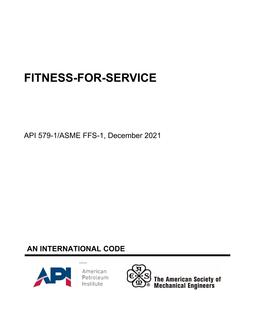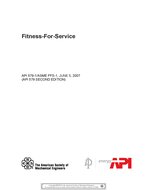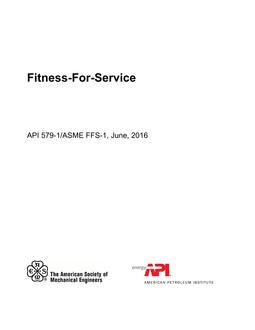This standard provides guidance for conducting fitness-for-service assessments using methodologies specifically prepared for pressurized equipment. Fitness-for-service assessments are quantitative engineering evaluations that are performed to demonstrate the structural integrity of in-service components that may contain a flaw or damage, or that may be operating under a specific condition that might cause a failure.
The guidelines provided in this standard can be used to make run-repair-replace decisions to help determine if components in pressurized equipment containing flaws that have been identified by inspection can continue to operate safely for some period of time. These fitness-for-service assessments are currently recognized and referenced by API codes and standards (510, 570, and 653), and by NB-23 (National Board Inspection Code) as suitable means for
evaluating the structural integrity of pressure vessels, piping systems, and storage tanks where inspection has revealed some level of degradation and/or flaws in the equipment.
This standard was developed by a joint API-ASME committee, is an ANSI American National Standard, and is recognized as an International Code.
Product Details
- Published:
- 12/01/2021
- ISBN(s):
- 9780791874493
- Number of Pages:
- 1478
- File Size:
- 1 file , 27 MB
- Product Code(s):
- C57904, C57904, C57904
- Note:
- This product is unavailable in Belarus, Cuba, Iran, North Korea, Russia, Syria, Ukraine


